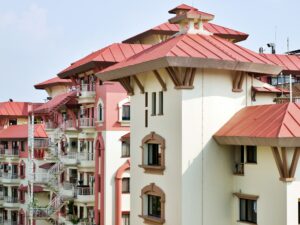Sustainability Assessment of Non-Public Sector Initiatives in Housing for Marginalized Groups
Introduction:
Sustainability of housing can be defined as housing that can address the social, economic, and cultural needs of the residents. Sustainable housing should be energy efficient and affordable for low-income groups. Nepal Government has listed 22 ethnic groups as marginalized groups among which 17 ethnic groups reside in the Terai region. Among those 17 groups, the highly marginalized group is the Musahar group who is socially deprived. Many private sectors have been involved in the making of affordable housing who are mainly focused on quantity rather than quality. So, the main purpose of this research is to assess the sustainability of the integrated model settlement established by the Dhurmus Suntali Foundation both in Terai as well as in the Hilly region of Nepal.
This research also attempted to study the socio-cultural aspects, economic aspects, and environmental aspects of the settlement with an exploratory and descriptive approach of research, following case study as a research design strategy and observations, interviews, ethnography, questionnaire survey as a research method. For this, first of all, a list of indicators was developed based on the literature review which was precised more, and then the performance indicators were derived which was followed by methodology.
Methodology:
A deductive approach of research has been applied to compare the list of performance indicators with the data obtained from the site visits. The study showed that Tamang people in Giranchaur are not ethnically marginalized but from the perspective of social participation and economic dimension they seem to be marginalized. In terms of marking of individual indicator parameters, all the settlements have scored very small marks in indicator parameters like passive solar design, energy-efficient appliances, use of materials, orientation, economic opportunities, etc. Based on these findings, different design strategies have been recommended on those low-scoring indicators.
Sustainability Design Strategy:
Some of the strategies were derived after analyzing all different indicator parameters. These are general strategies that can be applied while designing sustainability settlement.
Building Material Sustainability:
Bardiabs and Santapur has used 9” thick brick wall in cement mortar in wall and CGI sheet in roof whereas 8” thick HCB block has been used in Giranchaur. The U value of the building materials are responsible for maintaining thermal comfort inside the building. The U- value for 9 “thick brick wall is 1.96 W/m2- K, 8” thick HCB block is 1.89 W/m2- K, and that of CGI sheet is 61 W/m2- K which is very high due to which thermal comfort cannot be maintained inside the dwellings. Because of use of CGI sheet in roof and absence of insulation, people are feeling too much hot inside the room in all three cases.
Indoor Thermal Comfort:
As per national building code, the area of opening should be minimum 10% of floor area. Here in all three settlement, the opening area is about 10% which is within the range of national standard. The problem of insulation was a major issue during the cold season. The use of thick ply board in first floor helps to reduce the heat gain from the roof that helps in making comfortable in ground floor whereas it is very difficult for them to stay in attic floor due to no provision of insulation.

Conclusion:
Incorporating the aspects of sustainability in affordable housing for people has been less practiced in our context which was also clearly indicated after the study of these three settlements. So the main aim of this research was to find the level of sustainability under the various indicators which was achieved after analyzing the settlements from three aspects of sustainability. In terms of sustainability scale, Bardibas and Santapur was found to be medium sustainable and Giranchaur was found to be high sustainable.
However, looking into each aspects individually, the major problem in Bardibas and Santapur was related with economic sustainability but in Giranchaur few things are to be improvised in environmental aspects like drinking water problem, solid and liquid waste management.
